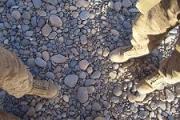Some -- few -- did use it (Vietnam body armor), most did not. It was available, it was lighter than current Vest / plate carriers but it was too constricting and it encased the torso (as does any current model...) and that induced heat casualties. It also too severely impeded mobility and most Commanders at the time knew that and they wanted -- and needed -- that mobility. It was a different Army, different mores...
ADDED: Just for info; USMC M1951 vest weighed ~8 lbs, USA M1952 about 10 lbs. and today's Interceptor about 16 to 25 lbs depending on plates and add-ons.Your calculator works, the rest of the brain isn't considering Drew's statement -- the 'leaders' will compensate for that weight reduction by adding something else -- that is, regrettably, pretty much proven by history.





 ), because at about the 72-96 hour mark, I've observed effectiveness to plummet.
), because at about the 72-96 hour mark, I've observed effectiveness to plummet.










Bookmarks